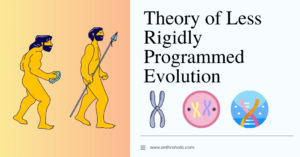AI Answer Evaluation Platform Live Now. Try Free Answer Evaluation Now
Abram Kardiner
Abram Kardiner (1891-1981) was a pioneering American psychiatrist and psychoanalyst who made a lasting impact on the field of anthropology through his integration of psychoanalytic theory into cultural studies. Best known for developing the concept of the “basic personality structure”, Kardiner helped establish psychological anthropology as a distinct and influential subfield.

Educated in medicine and trained in psychoanalysis under Sigmund Freud, Kardiner was uniquely positioned to explore the intersection of individual psychology and cultural patterns. His collaborative work with anthropologists like Ralph Linton produced groundbreaking interdisciplinary studies, such as The Individual and His Society (1939), which offered new ways to analyze the reciprocal relationships between culture and personality.
Kardiner’s career spanned a critical period in the 20th century when the social sciences were increasingly moving toward interdisciplinary dialogue. His contributions reached beyond academia, informing early understandings of war trauma, cultural adjustment, and mental health, and influencing figures like Cora Du Bois and Erik Erikson.
I. Early Life and Education
Birth and Family Background
Abram Kardiner was born on August 17, 1891, in New York City, into a Jewish immigrant family. His parents had emigrated from Eastern Europe, part of the wave of migration that brought many Jewish families to the United States in the late 19th century. Growing up in a culturally vibrant but economically modest environment, Kardiner was exposed early on to the complexities of identity, tradition, and assimilation—themes that would later shape his intellectual pursuits.
Education and Medical Training
Kardiner attended City College of New York, known for fostering academic talent among working-class youth. He then studied medicine at Cornell University Medical College, graduating in 1917. His medical training occurred during a time when psychoanalysis was gaining prominence in the U.S., especially in New York’s medical and intellectual circles.
Interest in Psychoanalysis and Training with Freud
After completing his medical degree, Kardiner served as a medical officer during World War I, where he encountered soldiers suffering from “shell shock,” a condition we now recognize as post-traumatic stress disorder (PTSD). These experiences deepened his interest in the unconscious mind and trauma, prompting him to pursue training in psychoanalysis.
In the early 1920s, Kardiner traveled to Vienna, where he studied directly with Sigmund Freud, one of the rare Americans to do so during that period. This experience profoundly shaped his intellectual orientation. Freud’s emphasis on early childhood, unconscious drives, and the shaping of personality through psychosexual development would become core components in Kardiner’s later attempts to bridge psychoanalysis and cultural anthropology.
II. Academic and Professional Career
Founding the Psychoanalytic Clinic at Columbia
Upon returning to the United States, Kardiner established himself in New York as a practicing psychoanalyst and began teaching at Columbia University. In 1930, he founded the Psychoanalytic Clinic for Training and Research at Columbia, which became one of the first university-based institutions dedicated to the clinical and academic study of psychoanalysis. The clinic served both as a treatment center and a research hub for exploring how psychoanalytic principles could inform broader social questions.
Bridging Anthropology and Psychoanalysis
Kardiner’s engagement with anthropology began in earnest during the 1930s, when he joined Columbia’s interdisciplinary seminar on Culture and Personality, organized by figures like Ruth Benedict and Ralph Linton. He saw anthropology as offering empirical grounding for psychoanalytic theories, while psychoanalysis could provide anthropology with deeper insights into the individual psyche.
III. Major Theoretical Contributions
Basic Personality Structure (BPS)
Kardiner’s most influential theoretical concept is the “basic personality structure” (BPS), which he introduced in The Individual and His Society (1939), co-authored with anthropologist Ralph Linton. According to this model, every society instills a set of shared childhood experiences-rooted in child-rearing, social norms, and environment-that lead to a relatively consistent core personality among its members. This basic personality then supports the cultural institutions and belief systems of the group.
Kardiner proposed that while every individual has unique psychological traits, the shared environment leads to a psychological pattern that supports cultural continuity. This model became foundational for the Culture and Personality school, influencing how anthropologists approached the relationship between culture and the individual psyche.
Projective Systems
In addition to BPS, Kardiner introduced the idea of “projective systems”, cultural mechanisms like myths, rituals, and religious practices through which unconscious psychological conflicts are externalized and socially managed. These systems allowed societies to “project” inner psychic tensions onto shared symbolic structures, enabling group cohesion and individual psychological stability.
Kardiner’s psychoanalytic lens emphasized that culture is not merely a collection of shared behaviors, but also a system of psychological defense mechanisms operating at a collective level.
Synthesis of Psychoanalysis and Culture
Kardiner’s approach marked a shift from the rigid universalism of Freudian theory to a more context-sensitive model. He recognized that cultural environments shape psychological development just as much as innate drives do. This bi-directional model-linking individual and culture-remains a touchstone in psychological anthropology.
IV. Ethnographic Work and Collaborations
Collaboration with Ralph Linton
Though Kardiner was not a fieldworker in the traditional anthropological sense, he relied on detailed ethnographic data collected by others. His collaboration with Ralph Linton, who had conducted fieldwork in Fiji, was central to the formulation of BPS. Linton provided the cultural context, while Kardiner interpreted it through psychoanalytic theory, creating one of the earliest interdisciplinary anthropological models.
Case Studies from Secondary Fieldwork
In The Individual and His Society and later works like Psychological Frontiers of Society (1945), Kardiner analyzed a series of societies-Fijians, Algerian Kabyles, and several Native American groups-using existing ethnographic data. Each society served as a case study for testing how basic personality structures formed, and how cultural institutions reinforced or compensated for psychological tendencies.
Kardiner also emphasized the clinical case study as a methodological tool. By analyzing individual life histories, he aimed to understand how culture was internalized differently by various members of the same society.
Emphasis on Trauma and Mental Health
Kardiner was one of the earliest psychoanalysts to explore war neuroses, drawing from his WWI experiences. His later work-especially The Traumatic Neuroses of War (1941)-examined how trauma interacts with cultural values, an early contribution to the understanding of what is now called post-traumatic stress disorder (PTSD).
Conclusion
Abram Kardiner’s career stands as a landmark in the fusion of psychoanalysis and anthropology, marking him as a visionary who helped expand the scope of both disciplines. At a time when academic fields were more siloed, Kardiner forged a path that demonstrated how psychological insight could enrich the understanding of culture—and vice versa.
His development of the basic personality structure model remains a cornerstone of psychological anthropology, offering a compelling framework for exploring how early childhood experiences and cultural institutions co-produce human behavior. Though later anthropologists would challenge the generalizability of Kardiner’s typologies, the method he pioneered-combining psychoanalytic depth with ethnographic analysis-set the stage for generations of researchers, from Cora Du Bois to Erik Erikson and beyond.
Kardiner’s concern with trauma, war neuroses, and cultural expressions of psychological conflict also presaged modern interdisciplinary fields such as medical anthropology, trauma studies, and cross-cultural psychiatry. His work on trauma among soldiers offered early frameworks for what would eventually be defined as PTSD, influencing both psychiatric practice and social policy during and after World War II.
In his later years, Kardiner continued to write and teach, remaining active in intellectual life until his death in 1981. Today, his legacy lives on not just in anthropology or psychoanalysis, but in all fields that seek to understand the human experience as both biologically rooted and culturally mediated.
His work reminds us that the psyche is never separate from the society it inhabits-and that understanding one requires understanding the other.
References
- Kardiner, Abram. The Individual and His Society: The Psychodynamics of Primitive Social Organization. Columbia University Press, 1939. https://philpapers.org/rec/KARTTN
- Kardiner, Abram. The Psychological Frontiers of Society. Columbia University Press, 1945. https://archive.org/details/psychologicalfro0000kard
- “Abram Kardiner.” Encyclopedia.com. https://www.encyclopedia.com/psychology/dictionaries-thesauruses-pictures-and-press-releases/kardiner-abram-1891-1981
- “Abram Kardiner.” Jewish Virtual Library. https://www.jewishvirtuallibrary.org/kardiner-abram
- “Culture and Personality.” Anthropology – The University of Alabama. https://anthropology.ua.edu/theory/culture-and-personality




